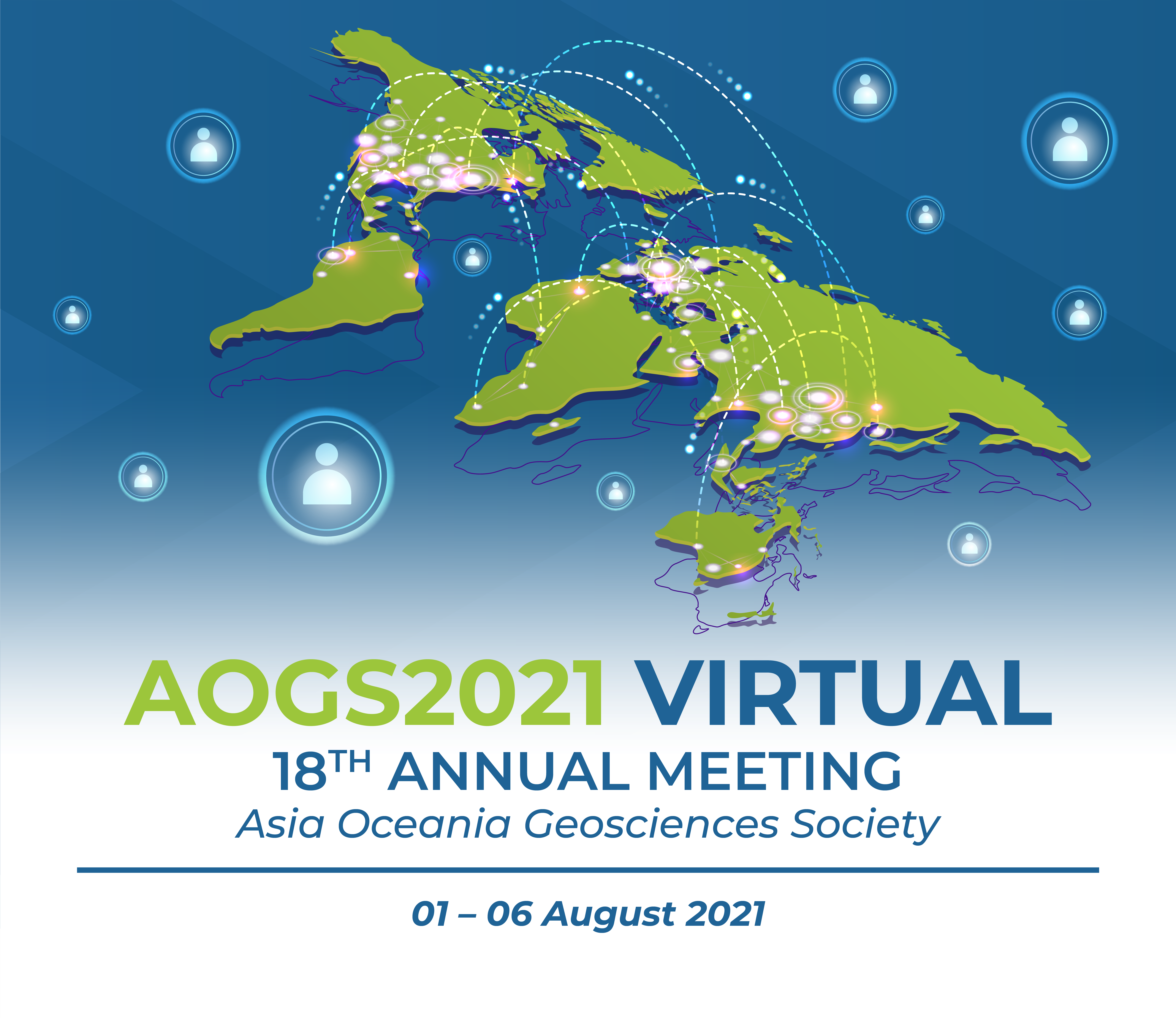

*Attend these AOGS2021 Webinars Free! – Registered Attendees Only
All AOGS e-news subscribers are eligible to attend. Please help us forward this information to your friends and
professional contacts. If not yet a subscriber, they need sign up for an account on MARS to receive
the complimentary invite. Not yet a subscriber?
Sign up Here to Receive Your Complimentary Invitation
Axford Lectures | Medal Lectures | Section Distinguished Lectures
All times shown are Singapore Standard Time (GMT+8)

| AOGS Annual Meeting | 16:00 – 17:30 |
| Axford Lecture 1 | 17:30 – 18:30 |
| Axford Lecture 2 | 18:30 – 19:30 |
Mon-02 Aug, 18:30 – 19:30, Room: WB2
Axford Lecture (Save a seat)
“Magmas beyond Megabar Pressures”
Sung Keun LEE
Seoul National University
The dense melts in contact with the molten iron core and the densest silicate crystals largely control how the mantle of the Earth and other super-earth bodies evolves from the magma oceans. While a full understanding of the melt densification requires study of the pressure-induced structural changes in the mantle melts, how the melt network evolves above megabar pressures (100 Gigapascal or 1 million atm) remains challenging due to their inherent structural disorder and the lack of suitable experimental probes at high pressures. Recent experimental breakthroughs in element-specific experimental probes, such as inelastic X-ray scattering (IXS) and multi-dimensional solid-state nuclear magnetic resonance spectroscopy (NMR) reveal the unprecedented details of bonding changes in glass and melts under compression and extreme friction.
Here, we provide an overview of the recent experimental progress and insights by IXS and NMR into structures of magmas under extreme compression above megabar pressures. High resolution NMR study of compressed oxide glasses under compression provides insights into the origin of anomalous seismic properties of upper mantle and pressure-induced changes in the element partitioning coefficient between melts and crystal/coexisting phases, constraining the fate radioactive nuclides in the earth’s interior. When compressed above megabar pressures, silicate melts undergo structural transitions into densely packed networks around compressed oxygen that are not observed at low pressures and substantially differ from those in the crystalline silicates. Particularly, the melt densification is accompanied with the prevalence of triply and quadruply coordinated oxygens above megabar pressures.
The extreme densification paths with compressed oxygens may account for anomalous negative buoyance of the complex partial melts in the deeper part of the mantle and those in the super-Earth bodies. Finally, based on structures of melts under extreme frictional sliding, we establish a new frictional melting model involving both equilibrium (controlled by particle size and composition) and metastable melting, providing insights into fault-weakening and the mechanism for large earthquakes.
Biography
Sung Keun Lee is a professor at Seoul National University (SNU), Korea. He was a Carnegie Fellow at Geophysical Laboratory, Carnegie Institution of Washington before joining a position at SNU. He obtained his Ph.D. in Geological and Environmental Sciences from Stanford University, including a Ph.D. minor in Chemistry. He received an M.S. degree in Chemical Engineering during his stay at Stanford, and received B.S. and M.S. degrees in Geology (with a Materials Science and Engineering Minor) from SNU.
Since joining a position at SNU, he created a research group that has been seeking to elucidate the atomic origins of geological processes. One of his major contributions is the quantification of the extent of molecular scale disorder in earth materials under extreme environments (e.g., pressure, surface confinement, and friction). His group has been exploring key microscopic constraints on melt densification and chemical evolution in Earth interiors, large magnitude earthquakes, and surface processes. Particularly, together with his colleagues, prof. Lee is the first to use x-ray Raman scattering to reveal the structural evolution in oxides glasses at high pressure and is among the first to apply 2-dimensional NMR techniques to study the structures of earth materials under compression. He established the oxygen-specific densification mechanism of dense magmas in mantle and those in other super-Earth bodies. Prof. Lee proposed a new atomically-consistent melting mechanism where the friction process during coseismic slip is described by both equilibrium (controlled by particle size) and metastable melting, providing insights into the mechanism for large earthquakes.